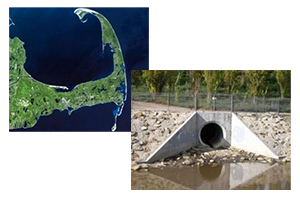
Figure: Elevated walkways that permit foot traffic between buildings above ground level
(Source: Zheng Fang et al. "Case Study of Flood Mitigation and Hazard Management at the Texas Medical Center in the Wake of Tropical Storm Allison in 2001")
Climate change impacts
Climate change has increased the frequency of heavy rains and the risk of flooding in the United States. In 2001, Houston suffered a historic 500-year flooding caused by Tropical Storm Allison. At the Texas Medical Center, the largest medical center in the United States, medical facilities, emergency generators, electrical switchgear, boilers, and chiller units were damaged. In addition, at the Baylor College of Medicine, the basement floor, which held 30,000 research animals, was submerged.
Adaptation activity
The Texas Medical Center decided that a full review of its infrastructure is required to anticipate future floods, and key elements of its facilities were relocated to floors above projected flood levels. To initiate such hazard mitigation efforts, the medical center developed a long-term hazard mitigation plan (HMP) that included 42 sustainable precautions to counter the potential effects of extreme weather events. Several organizations worked together to devise and launch the overhaul in the wake of Tropical Storm Allison after consideration of stakeholders’ understanding of the process, timeframe, expected benefits, and other sources.
The mitigation plan has four key stages: (1) setup of organizational structure; (2) risk assessment; (3) formulation of strategy; (4) implementation and monitoring.
Among these stages, (2) risk assessment was identified as the most integral part of the mitigation plan, with more than 100 hazards identified. These hazards were divided into three categories: threats to physical structures, potential obstacles to the operation of the facility, and risks of death or injury. The mitigation plan is implemented in order of the highest priority being attended to first. The progress is then monitored, and the data is used to revise and update the plan as necessary.
Outputs / Expected benefits
The mitigation plan has enabled the medical center to implement a number of infrastructure improvements to increase disaster resilience.
Related Information
- U.S. Climate Resilience Toolkit: After Record-Breaking Rains, a Major Medical Center's Hazard Mitigation Plan Improves Resilience
- Zheng Fang et al. "Case Study of Flood Mitigation and Hazard Management at the Texas Medical Center in the Wake of Tropical Storm Allison in 2001." 2014 American Society of Civil Engineers.




